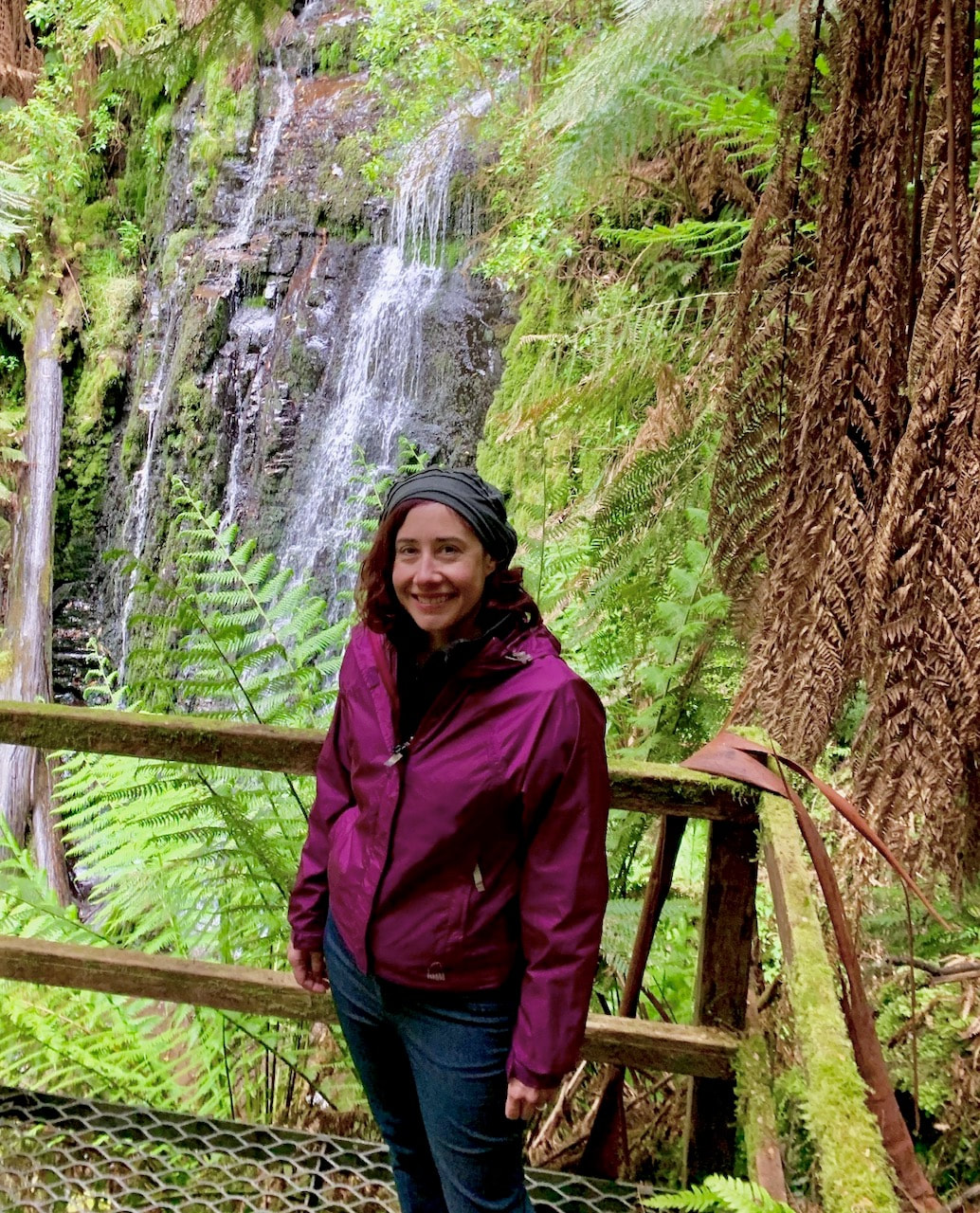For me ecohydrology helps us understand the two-way interactions between ecosystems and the water cycle. I’ve always been very interested in the role of vegetation in the water cycle, but over the years my focus has expanded to include other components of ecosystems and how they interact with water, such as cities, people, and the built environment. There are many definitions of ecology (some definitions include humans and some don’t) but if we define ecological processes very broadly, then the many ways in which humans and the rest of the biosphere interact with water all fall within the scope of ecohydrology.
What are your undergraduate and graduate degrees in?
I grew up in New York City and stayed there for college, majoring in environmental science at Barnard College. Throughout college I had a part-time job at the headquarters of the Environmental Defense Fund, where I worked for Fred Krupp, the Executive Director (who is still there!). I was interested in studying how global change affects ecosystem processes, and I asked Fred for advice about graduate programs in that area. He recommended the Duke School of the Environment (now the Nicholas School), which at that time was a new interdisciplinary merger of the School of Forestry, the marine lab, and the geology department. I ended up in the lab of Ram Oren, a tree ecophysiologist working on forest water relations. I got both an M.S. and a Ph.D. with Ram, though to this day, I’m not actually sure what these degrees are in! They’re basically in ecology (with a certificate in hydrology), except at that time the Ph.D. program in the Nicholas School was brand new and the details hadn’t quite been ironed out. My transcript just labels my degrees as “Environment.” Appropriate enough for an interdisciplinary field like ecohydrology!
How did you arrive at working in/thinking about ecohydrology?
I originally went to Duke to study the effects of elevated CO2 on forest ecosystems. At that time the Duke Free Air CO2 Enrichment (FACE) experiment was under construction. While I was waiting for the experiment to be completed I worked on Ram’s other projects, many of which were collaborative studies of water and energy fluxes with Gaby Katul. I got very interested in their work on the effects of water stress on local forests, and ended up focusing my dissertation on the effects of drought on canopy conductance. Unfortunately, once I decided to measure the responses of tree transpiration to drought, the weather stopped cooperating (as is usually the case with field work). Conditions in the Duke Forest were fairly wet for the next few years, and I never really got to study severe drought. So for my postdoc I decided to study an ecosystem where I was almost guaranteed to find drought stress - I took a position at the Desert Research Institute’s Nevada FACE site in the Mojave Desert. This was in 1998, and that year there was a very significant ENSO event. And wouldn’t you know it? It wouldn’t stop raining in the southwest that summer! I did eventually encounter severe droughts in my research projects (and then some – water scarcity has reached crisis levels in the western U.S.), but in my early career severe drought stress was a bit elusive!
What do you see as an important emerging area of ecohydrology?
During my postdoc my research transitioned from studying the effects of atmospheric change on ecosystems to studying urbanization. The transformations of land, water, and ecosystems by human domination of the land surface is central to global environmental change. I’m very interested in the study of the two-way interactions between people and the environment. Humans don’t just influence the environment; we’re influenced by the environment as well. This emerging field of “socio-ecohydrology” is very exciting, because it offers the possibility of developing and testing feasible and equitable solutions to socio-environmental problems. Socio-ecohydrologic studies are increasingly shedding light on the inequities in water consumption, drought impacts, and effects of climate change on vulnerable populations. This works shows the need to integrate justice and ethical concerns into studies of the water cycle. An example of what an ethical code for water might look like can be found here: https://www.thenatureofcities.com/2020/10/31/the-need-for-an-ethical-code-for-water/ If you have comments about it, please let us know!
Do you have a favorite ecohydrology paper? Describe/explain.
The paper “Water in a Changing World” by Rob Jackson et al. (2001), Ecological Applications v.11(4) 1027-1045 was eye-opening for its estimation of the human influence on the water cycle. The authors calculated that over half of the freshwater runoff available on earth is already appropriated for human use. Over half! And that was 20 years ago – the proportion is undoubtedly larger today. This paper was a wake up call for me about the urgency of ecohydrologic and socio-ecohydrogic research. There is no time to waste – we need solutions-oriented research on water equity, quality, and quantity right now.
What do you do for fun (apart from ecohydrology)?
I’m very fortunate to live in one of the most beautiful places on the planet. For fun my husband and I, along with our two dogs, hike and explore Utah and the surrounding states, especially in the area around Moab where we’ve lived part-time for a number of years. Luckily, outdoor recreation is still possible during the pandemic. I miss seeing my friends and colleagues in person, but at least we have our national parks and public lands. Utah is a long way from the city where I grew up, but it’s become home.

 RSS Feed
RSS Feed